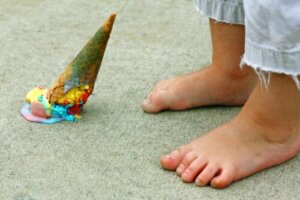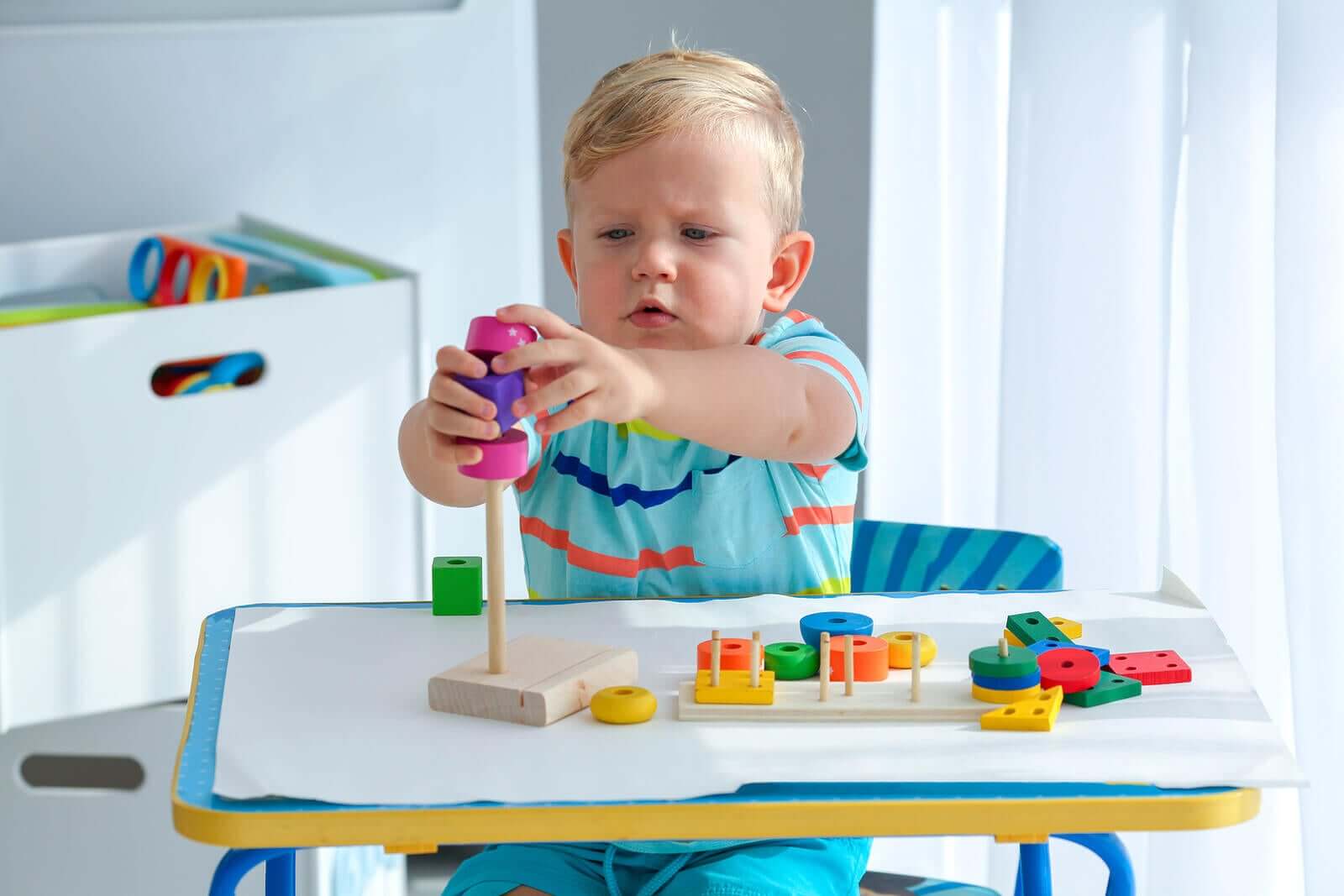Control of Error, According to Montessori

María Montessori was one of the great pioneers of modern education and an enormous influence on today’s teachers. One of her biggest contributions was the concept of control or error.
It’s always been said that you learn from mistakes, and in fact, this statement constitutes one of the pillars of the scientific method. Therefore, we want to explain to you what this term for the Montessori method consists of and how to implement it at home appropriately.
What is control of error?
Let’s start with the crux of the matter. Control of error is a key piece of the methodology established by María Montessori and involves the adult accompanying the child. That is, the teacher, parent, or caregiver in charge.
This figure acts as a guide for the little one, but should only act as a companion. Their function is to observe without interfering with the child’s learning, as this is how the child develops correctly.
Therefore, control of error should allow children to be aware of their failures for themselves and to correct them on their own when they occur.
Therefore, all the materials that are offered to the child must be prepared so that children can correct their mistakes without altering their self-esteem or their ability to concentrate on the activity.

Errors and the Montessori method
According to the Montessori method, each child must be able to discover whether what they’re doing is correct or not. And this must be achieved by their own means and their own abilities, without the adult explaining or intervening. This provides the infant with a conscious formula for autonomous learning.
To make it easier to understand, let’s look at a practical example. Let’s imagine that the child has a key and several locks. By instinct, they’ll try one by one until they find the right one. The mechanics are very similar to that of puzzles: Try until you get it right.
So, control of error is based on the premise that when the child makes a mistake, they realize that they haven’t succeeded and repeat the action on their own until the desired result is achieved.
The benefits of control of error
We find multiple benefits in control of error as stipulated by the Montessori method:
- Provides independent and autonomous learning for little ones.
- Promotes the capacity for analysis and observation.
- Increases the infant’s self-esteem: This is achieved by the fact that they have greater confidence in themself and in their possibilities. It also allows them to get to know themself, develop their self-concept, and become aware of their strengths.
- Establishes a key foundation for logical thinking: Every action has consequences.
- Improves their ability to solve problems, a very important life skill.
- Allows them to discover that making mistakes isn’t so negative and that it’s part of everyday life.
- Shows that errors are part of a learning process.
- Encourages the self-evaluation of children so that they take the necessary actions and correct mistakes.

What should we adults do?
What will we adults do during this whole process? Our work is very important, as we’re the ones who provide the children with the material and activities to learn control of error.
Remember that adults are here to guide without interfering with the development of little ones. Therefore, it’s not good for us to run quickly to the aid of the child who’s making a mistake because we rob them of the opportunity to learn something for themself.
María Montessori was one of the great pioneers of modern education and an enormous influence on today’s teachers. One of her biggest contributions was the concept of control or error.
It’s always been said that you learn from mistakes, and in fact, this statement constitutes one of the pillars of the scientific method. Therefore, we want to explain to you what this term for the Montessori method consists of and how to implement it at home appropriately.
What is control of error?
Let’s start with the crux of the matter. Control of error is a key piece of the methodology established by María Montessori and involves the adult accompanying the child. That is, the teacher, parent, or caregiver in charge.
This figure acts as a guide for the little one, but should only act as a companion. Their function is to observe without interfering with the child’s learning, as this is how the child develops correctly.
Therefore, control of error should allow children to be aware of their failures for themselves and to correct them on their own when they occur.
Therefore, all the materials that are offered to the child must be prepared so that children can correct their mistakes without altering their self-esteem or their ability to concentrate on the activity.

Errors and the Montessori method
According to the Montessori method, each child must be able to discover whether what they’re doing is correct or not. And this must be achieved by their own means and their own abilities, without the adult explaining or intervening. This provides the infant with a conscious formula for autonomous learning.
To make it easier to understand, let’s look at a practical example. Let’s imagine that the child has a key and several locks. By instinct, they’ll try one by one until they find the right one. The mechanics are very similar to that of puzzles: Try until you get it right.
So, control of error is based on the premise that when the child makes a mistake, they realize that they haven’t succeeded and repeat the action on their own until the desired result is achieved.
The benefits of control of error
We find multiple benefits in control of error as stipulated by the Montessori method:
- Provides independent and autonomous learning for little ones.
- Promotes the capacity for analysis and observation.
- Increases the infant’s self-esteem: This is achieved by the fact that they have greater confidence in themself and in their possibilities. It also allows them to get to know themself, develop their self-concept, and become aware of their strengths.
- Establishes a key foundation for logical thinking: Every action has consequences.
- Improves their ability to solve problems, a very important life skill.
- Allows them to discover that making mistakes isn’t so negative and that it’s part of everyday life.
- Shows that errors are part of a learning process.
- Encourages the self-evaluation of children so that they take the necessary actions and correct mistakes.

What should we adults do?
What will we adults do during this whole process? Our work is very important, as we’re the ones who provide the children with the material and activities to learn control of error.
Remember that adults are here to guide without interfering with the development of little ones. Therefore, it’s not good for us to run quickly to the aid of the child who’s making a mistake because we rob them of the opportunity to learn something for themself.
All cited sources were thoroughly reviewed by our team to ensure their quality, reliability, currency, and validity. The bibliography of this article was considered reliable and of academic or scientific accuracy.
- Oswald, P., Schulz-Benesch, G. (1997). Basic Ideas of Montessori’s Educational Theory: Extracts from Maria Montessori’s Writings and Teachings. Santa Bárbara: ABC-CLIO.
- Asociación Montessori Española. Biografía María Montessori. [Internet] Disponible en: http://asociacionmontessori.net/biografia/
This text is provided for informational purposes only and does not replace consultation with a professional. If in doubt, consult your specialist.








